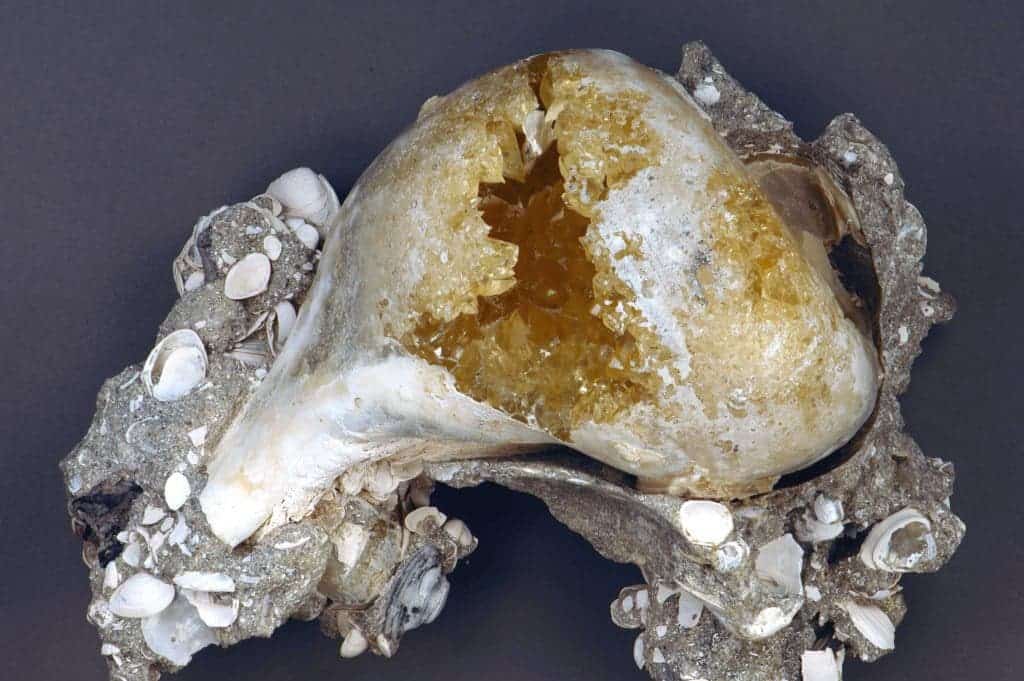
This is a beautiful geodized fossil – a sea snail fossil filled up by a yellowish calcite geode.
The fossil is part of the Busycon genus – a genus of large, generally edible sea snails. These snails are commonly known in the United States as whelks or Busycon whelks. This fossil was reportedly taken from the Anastasia Formation in Florida, USA — a formation dating from the Upper Pleistocene to lower Holocene, approximately 126,000 years ago to 8,000 years ago. This is extremely new in geological time.
The matrix surrounding the large snail shell is a coquinoid quartzose sandstone having abundant whole bivalve shells. Florida’s Anastasia Formation is well known for having true coquina beds. Most of the geodized fossils are large Mercenaria clam shells. Some of the geodes are developed in large Busycon snail shells, such as the specimen shown here.
Classification of Busycon: Animalia, Mollusca, Gastropoda, Neogastropoda, Muricoidea, Melongenidae.



